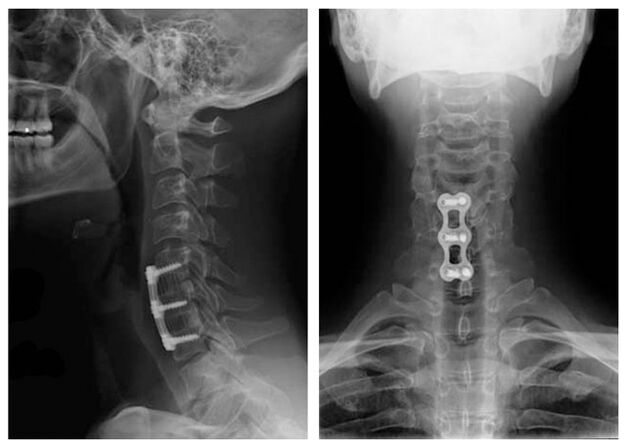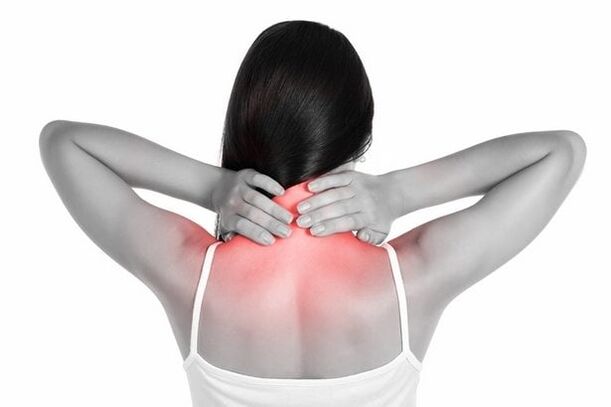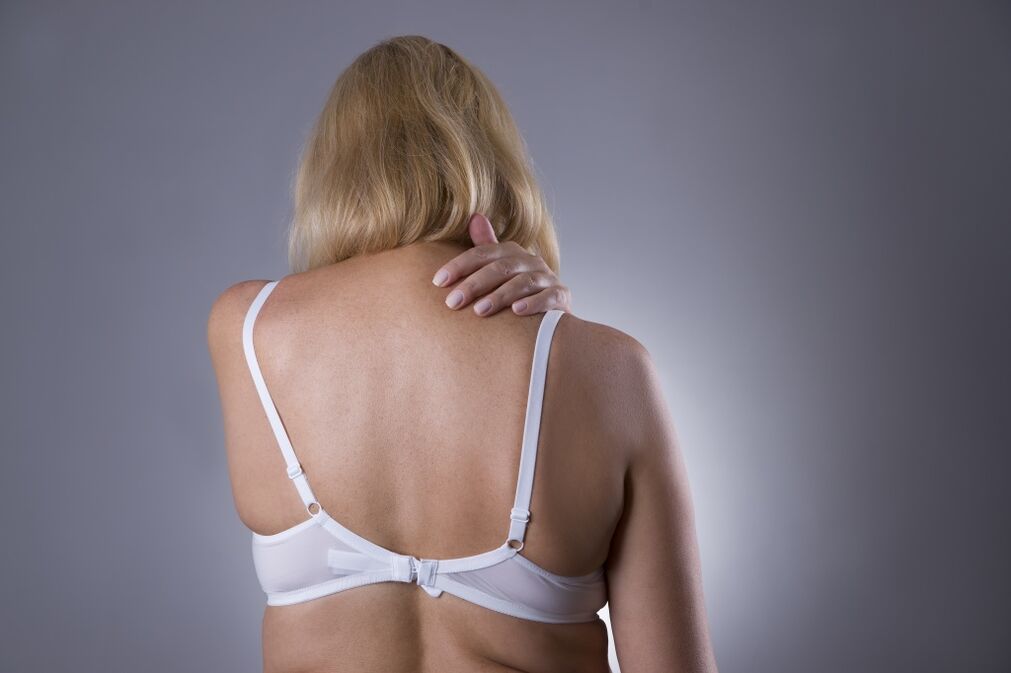The cervical region of the column undergoes an increase in loads, which cervical muscles are trying to lead to balance during the influence of previous sources. This causes the appearance of muscle spasm, because there is a violation of blood transport throughout the body. As a result, anatomical damage formation is observed.

- A sedentary lifestyle.
- Work associated with long monotonous movements.
- Sport as a strong physical tension.
Osteochondrosis, a disease of the century and this is a reason, and the rest is more likely to be a consequence that leads to the development of a disease. The manifestations of the disease are diverse, and on the first visit to a neuropathologist, it is not always possible to make an accurate diagnosis. In any case, having felt discomfort and the first symptoms, we visited the doctor's radiculitis. Diagnosis and start treatment based on exam results. In the early stage, to possibly cure any pathology. Osteochondrosis of the cervical region is a chronic and slowly progressive spinal disease, in which vertebrae, intervertebral joints and discs are affected and destroyed. The vertebrae from the first to seventh, which belong to the cervical region, suffer. As the disease progresses, intervertebral discs lose their elasticity and resistance, they flatten, relax, their amortizing properties get worse. This deformation occurs due to changes caused by power disorders and tissue exhaustion. These violations are one of the natural aging processes of the body, but several overloads, posture disorders, injuries, congenital anomalies of the spine and some other causes cause early wear and tear of the cartilage and discs. More and more young people choose sedentary work. The absence of properly organized regular loads leads to a weakening of the muscles that fix the spine, a decrease in metabolism and blood circulation in intervertebral spaces. As a result, as a result of the physical activity of a moment, a pinch of the spinal nerves can occur or an intervertebral hernia is formed. Spinal deformation (lordosis, kyphosis, scoliosis) is one of the causes of osteochondrosis
- Excessive physical activity in sports or heavy physical work;
- hereditary predisposition;
- Neck hypothermia (walking in winter without a scarf);
- stress;
- work on the computer;
- obesity.
Some of the above causes cause osteochondrosis and other columns. Cervical osteochondrosis develops with an excessive load in this part of the spine. The neck muscles are trying to reduce it, which leads to spasm, circulatory disorders and, as a result, to degenerative processes in the spine. This disease is dangerous because the vertebral artery passes near the area of the lesion, which feeds the brain. With the displacement of discs, the growth of the fibrous tissue, the operation of the blood vessels occurs. For the successful treatment of the osteochondrosis of the cervical region, it is first necessary to establish the cause of the occurrence, the previous requirements that caused their development and eliminated them. Until recently, the disease was alone in people of 45 years. Now the young people are subject to 18 to 25 years. The main causes and prerequisites for the occurrence of osteochondrosis of the cervical vertebra are:
- Violation of the posture in young people or adolescence.
- Excess weight, obesity of different degrees. Additional pounds increase the load on vertebrae and discs, which leads to degenerative processes.
- Spine, scoliosis.
- Back injuries, which may have happened in childhood or adolescence.
- Violation of metabolic processes.
- Work related to physical work, which can cause column diseases in different departments.
- Economic lifestyle, sitting work, inappropriate performance of any exercise.

- Stress, nerve tensions negatively affect the general state of the body, can cause cervical osteochondrosis.
- Infectious diseases transferred often become the root cause.
- The wrong and uncomfortable position of the body during sleep (for example, an awkward pillow).
- Innate problems or the presence of hereditary diseases.
The main cause of the appearance of the disease is a sedentary lifestyle, because nutrients seem to "stagnate" and do not reach destiny: the spine. However, there are others:
- Lack of physical activity and sports, as a result, a poorly developed muscle corset
- Excessive physical activity
- Smoking and alcohol abuse
- Food abuse too oily and salty, "fast" carbohydrates
- Overweight
- inheritance
- generic or other injuries
- Initially curved posture
- Infectious diseases transferred with complications in the spine
- Natural body aging
The main causes of cervical osteochondrosis are a sedentary lifestyle. Pathologies are more susceptible to drivers, office workers, lovers to sit near the monitor screens. Due to the constant sedentary image and with a lack of physical effort, they can:
- There are violations of metabolic processes;
- Sales deposit in the liver, kidneys, neck;
- The degree of salts in lymphatic fluid, as well as blood flow, increases.
The violations of the vertebrae are caused due to the lack of nutrients of the intermittent disc. In addition, the possible causes of osteochondrosis of the cervical region are unbalanced and incorrect nutrition. The most frequent factors for the osteochondrosis of the cervical column:
- excess weight, hormonal imbalance;
- Strong physical activity, heavy for the human body;
- genetic predisposition;
- Constant stress, nervous tension;
- damage to posture (rheumatism, scoliosis, etc. );
- trauma in the neck of the neck, spine;
- Abnormalities in the development of neck departments, flat feet;
- body hypothermia;
- changes related to age;
- Sports activity
Many of the above factors form the load on the vertebrae of the neck, so muscle spasm appears. As a result, circulatory disorders manifest, metabolic processes decrease and this leads to degenerative deviations. Sometimes, with cervical osteochondrosis, the cause of formation can be a developing disc, which is transmitted to bone tissue and nearby vertebrae. It often appears with prolonged physical effort.
Methods to prevent disease
Osteochondrosis is a recurrent-dystophical degenerative pathology that proceeds in the context of the gradual destruction of intervertebral discs and bone deformation. It is necessary to exclude the factors that cause the deterioration of the trophic of cartilage tissues from the usual way of life. This is a low motor activity, excess weight, excessive physical activity, a diet deficiency of products with a high content of trace elements, vitamins.
Progress, the osteochondrosis of the cervical vertebrae passes some stages that are classified by several symptoms. Distinguish 4 stages of the development of pathology:

- Basically, in the first stage of the disease, the unpasted soft -softener of the cervical curve (lordosis) is noted. The clinical manifestation is insignificant, you cannot observe serious neck pains, exacerbating with head turns, as well as muscle tension. This stage is without medications, the main thing is to change nutrition, exercise, etc.
- There is instability between the vertebrae, its displacement, Thuria can occur. The patient has more improved pains transmitted to the shoulders, hands. The height of the discs becomes less, because of this there is infraction of the nerves. The patient feels fatigue, headaches, the level of work capacity, lack of attention.
- There is a decrease in the height of the intervertebral discs, narrowing the holes, a hernia begins to form. Neck pain and shoulders increases, the muscles of the hands weaken, numbness, discomfort, dizziness. The diagnosis determines the weak mobility of the neck.
- In 4 stages, the destruction of the disk is observed, they are replaced by connective tissue. Such current hurts several sections of the crest found in different stages of the violation. In people, coordination changes, pain, dizziness increase, noise in the ears, etc. , it can occur.
The signs of the disease in the neck are significantly different from the symptoms of osteochondrosis in another area of the spine. Since the cervical vertebrae are close, the nerve roots and the spinal cord is pinched. This leads to the appearance of such signs:
- Pain syndrome is located in the neck, neck, shoulders, arms and legs. At the time of joining nerve receptors, the appearance of uncomfortable sensations in the shoulder area, the back of the head, the hands begin to be rebuilt. Due to spasm in cervical muscles, blood circulation is altered.
- The appearance of weakness in the upper extremities is observed, associated with the damage to the functionality of the roots, which contributes to the inclusion of motor nerves that reconstruct the muscle tissue in the hands.
- The upper limbs are rebuilt due to a decrease in sensitivity in them, violations of the roots in which the sensitive nerve endings are found.
- When turning your head, painful sensations appear, you can also hear a crunch. This is explained by the damage to the small joints of the cervical region, a decrease in the level of intervertebral discs.
- The patient complains of insufficient resistance, the appearance of fatigue, dizziness, coordination disorders. Due to the displacement of the elements of the column, the vertebral artery is squeezed. Because of this, the blood circulation worsens, which leads to a weakening of the blood supply to the occipital and cerebellum.
- The appearance of vision problems, loss of sensitivity in language is observed.
The symptoms of cervical osteochondrosis in women are not different from signs in men. Women who have reached 45 years of age and older, who are diagnosed with such illness, write down numbness and tingling in the upper extremities in a dream.
Methods for the treatment of cervical osteochondrosis
The main signs of osteochondrosis of the cervical region include:
- Pain on the back of the head, neck, arm and shoulder, which intensify when sneezing, coughing and minimal load in the arm;
- burning among the shoulder blades, tingling in legs or arms, numbness;
- pain and crunch on the neck that occur during the inclination and the turns of the head;
- fatigue, weakness;
- fainting and dizziness derived from acute turns of the head;
- The headaches, which generally begin on the back of the head, extend to temples and crown.
Other signs of cervical osteochondrosis include noise in the ears, auditory disability and a decrease in visual acuity. Sometimes, the disease is felt by pulling pains in the area of the heart. In the first signs of cervical osteochondrosis, see a doctor who will perform a comprehensive exam will make a diagnosis. In this case, diagnostic methods such as magnetic resonance, laboratory studies, ultrasound, ECG. Just as Shantsa necklaces are elastic with plastic or metal inserts, gesture, inflatable. The devices vary in height, degree of fixation and design of fasteners. It all depends on the negligence, the characteristic symptoms of the pinch of the root nerve, as well as other factors. How to cure cervical osteochondrosis or reduce its manifestation with medications:

- Non -steroidal anti -inflammatory medications. Medications relieve swelling, pain, relieve the patient's condition.
- B vitamins with osteochondrosis of the cervical region. Contribute to the acceleration of metabolic processes in soft tissues.
- Recovery stimulants. They help restore cartilage tissue even in a damaged disk.
- A drug group that helps relieve muscle cramps.
- Anesthesia.
Cervical osteochondrosis is treated with conservative methods, and treatment is always integral. Pharmacological therapy is the same for the osteochondrosis of any department: using medications of certain pharmacological groups, but the choice of specific drugs of these groups, dose, the duration of the intake is selected individually for each patient. Image X -Ray of the cervical column after the surgical treatment of vertebrae C5 C7 is complemented with a temporary use of a Chastz necklace or its varieties. Due to the fixation of the cervical vertebrae, the osteochondrosis of the cervical region is treated faster. This additional orthopedic device helps to deal with pain, normalizes blood flow through the neck vessels and improves the patient's general condition.
The severity of the symptoms of cervical osteochondrosis disease depends on the degree of destruction of vertebrae structures. The symptoms are aggravated by the growth of bone tissue with the formation of osteophytes, root syndrome (root pain when pincolizcar the nerve), intervertebral hernia (protrusion of the disc in the spinal channel). The first signs of the disease are periodic headache in the neck, neck pain, crunch and click on the vertebrae when turning the head, sometimes a slight tingling. Over time, symptoms grow and pain intensity intensifies. It is difficult to raise your hand from the side of the defeat, there is immediately a shot in the shoulder or neck. The restriction of head movements due to pain often occurs in the morning after sleep in an awkward position. The ailment leads to tightening the roots of the peripheral nerves (Roying Syndrome) and causes pain throughout these nerves. It is possible to numb the hands or fingers, a violation of the sensitivity of certain areas of the skin innervated by a pinched nerve.


















